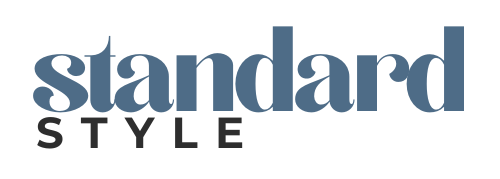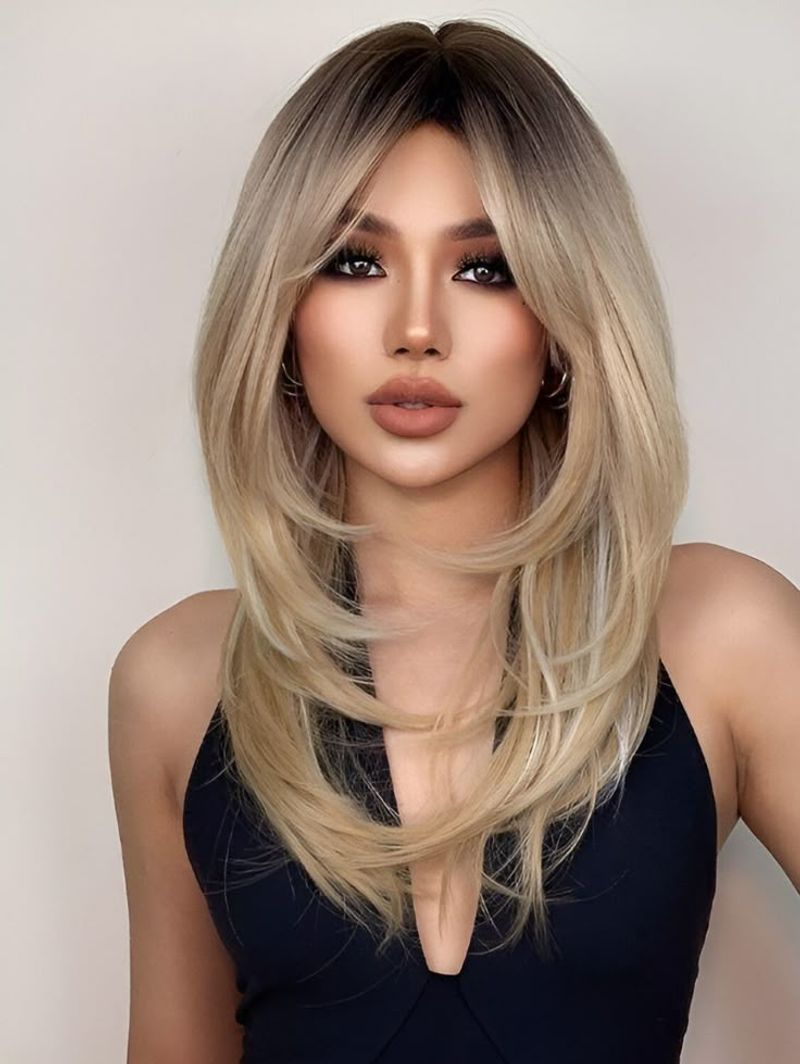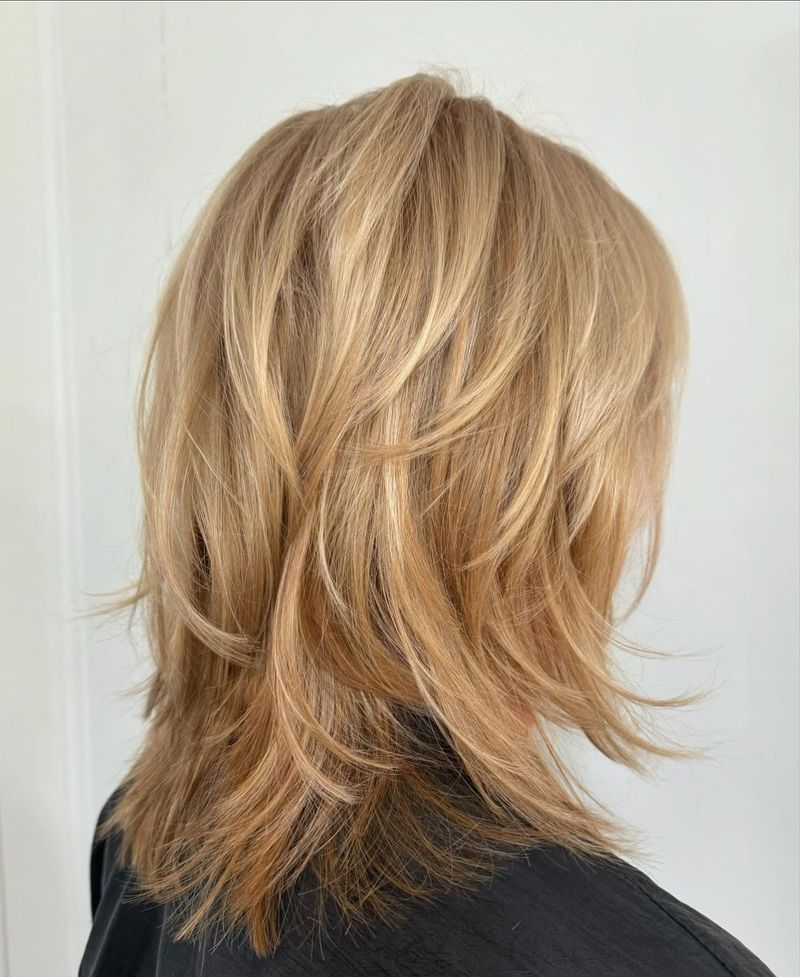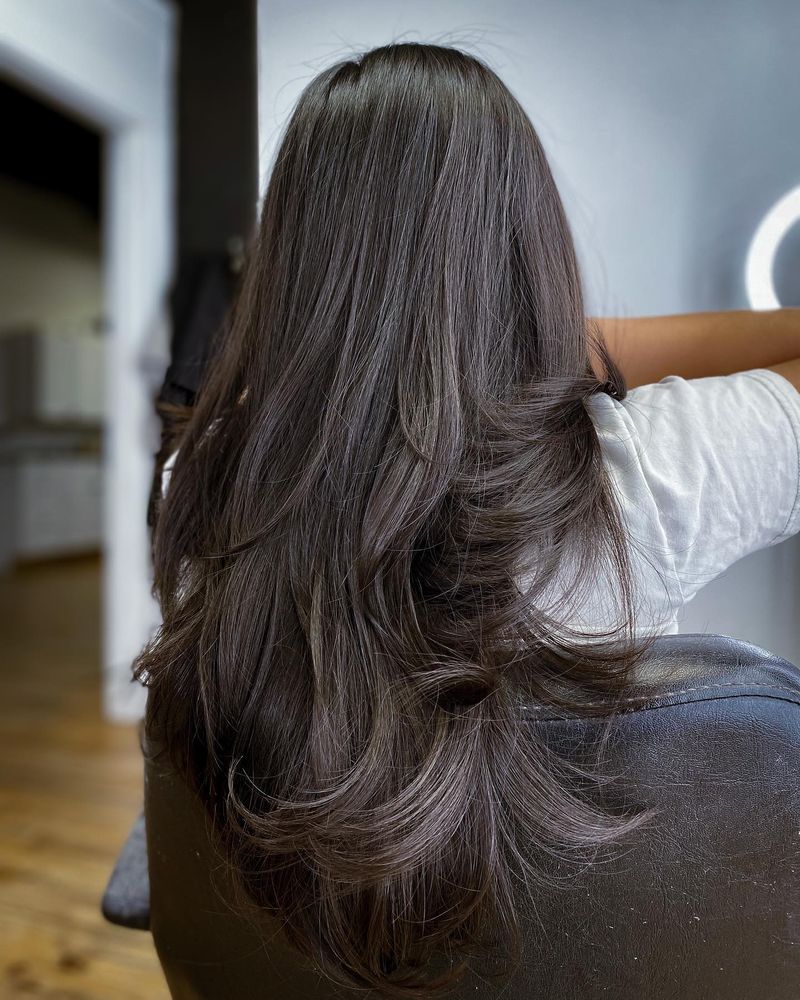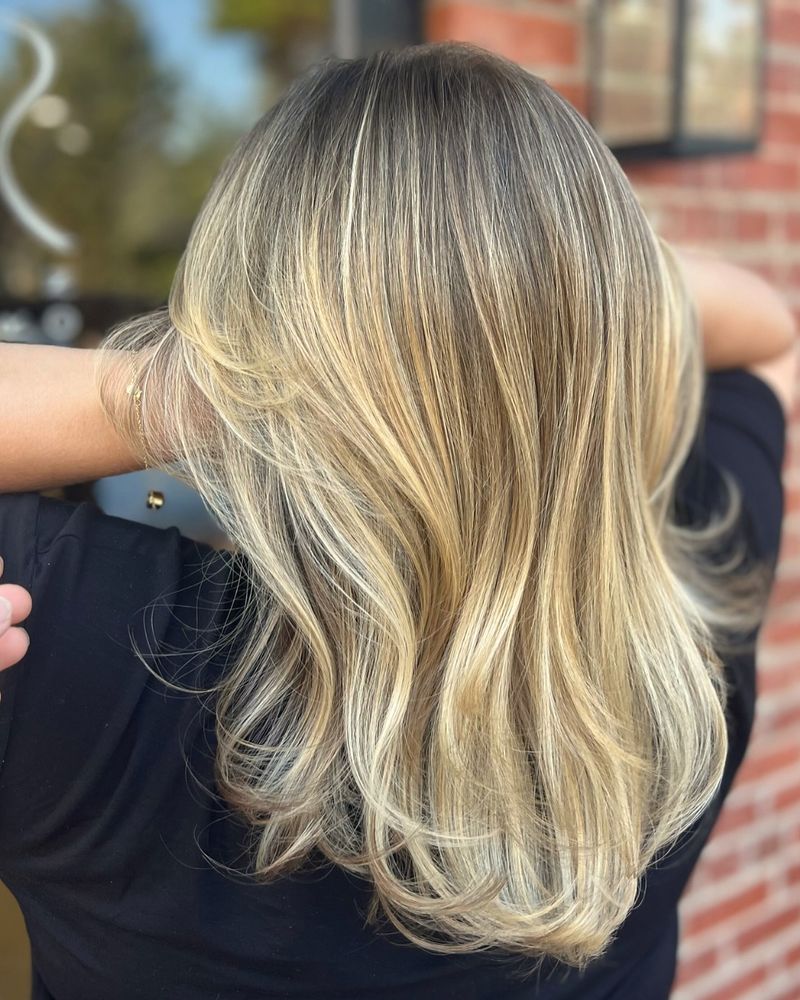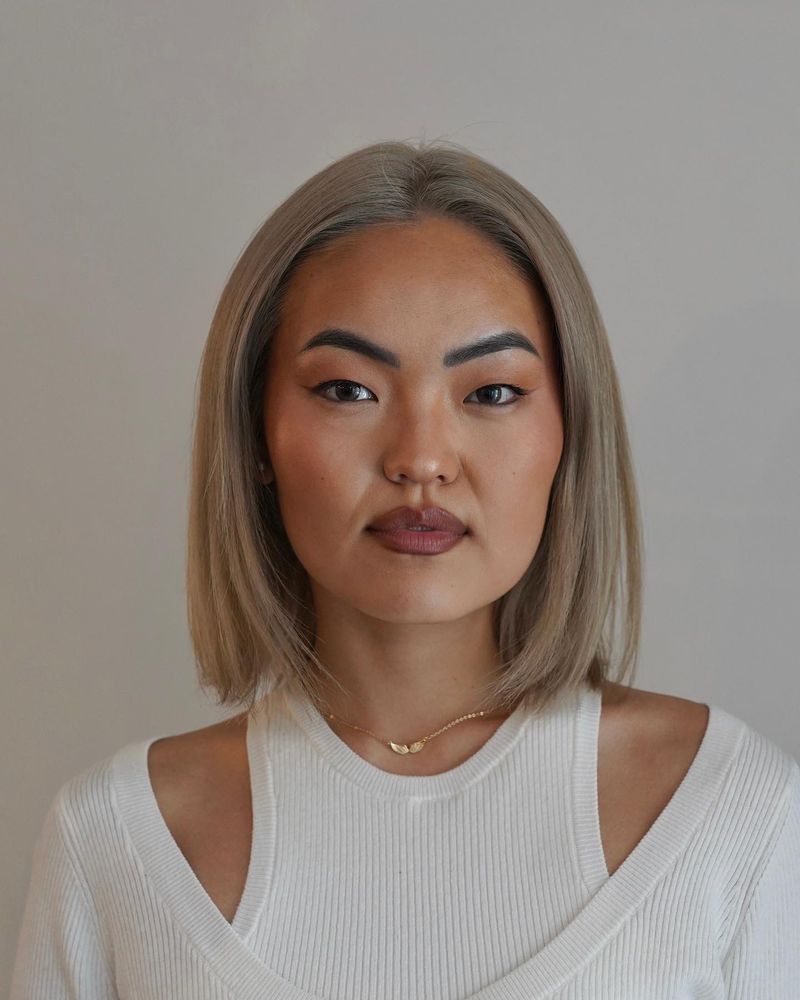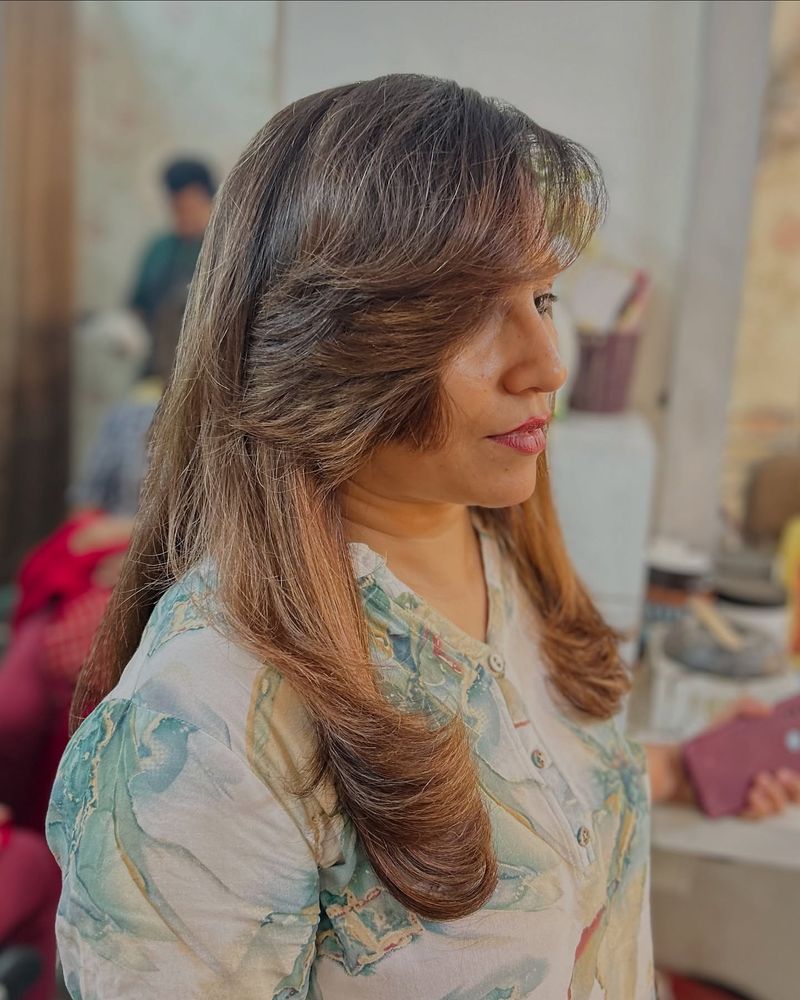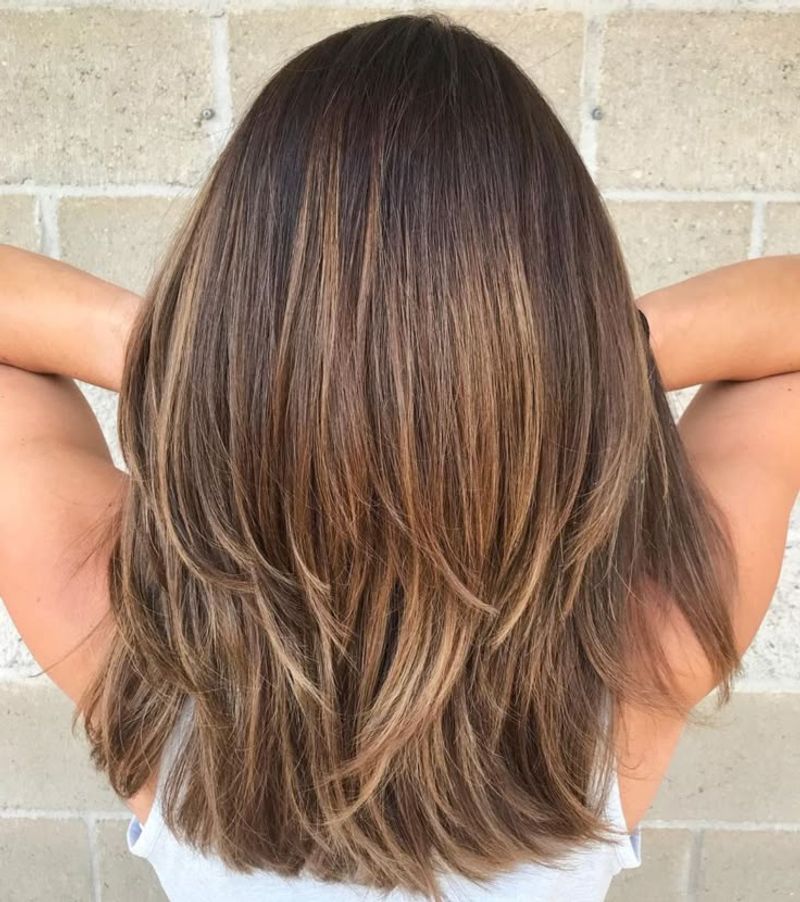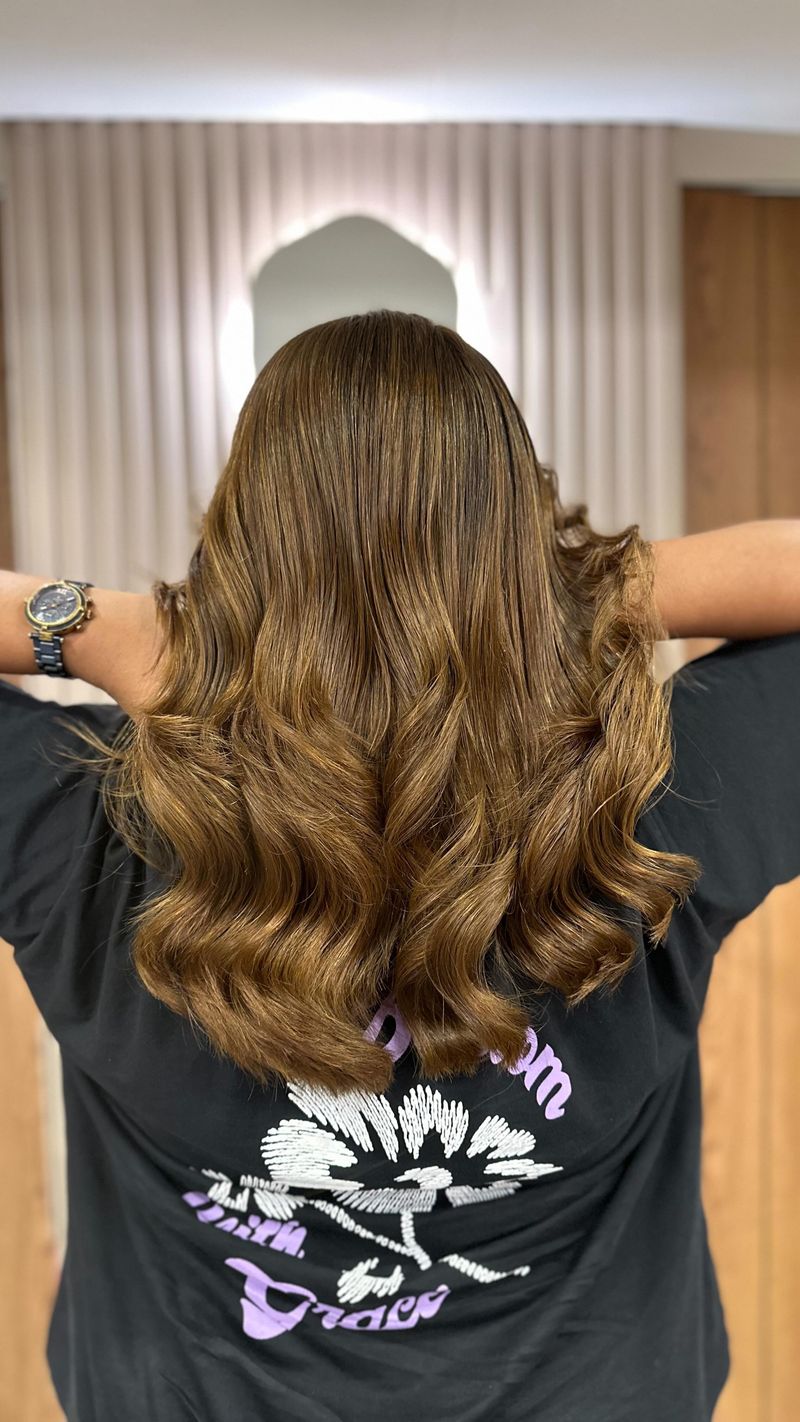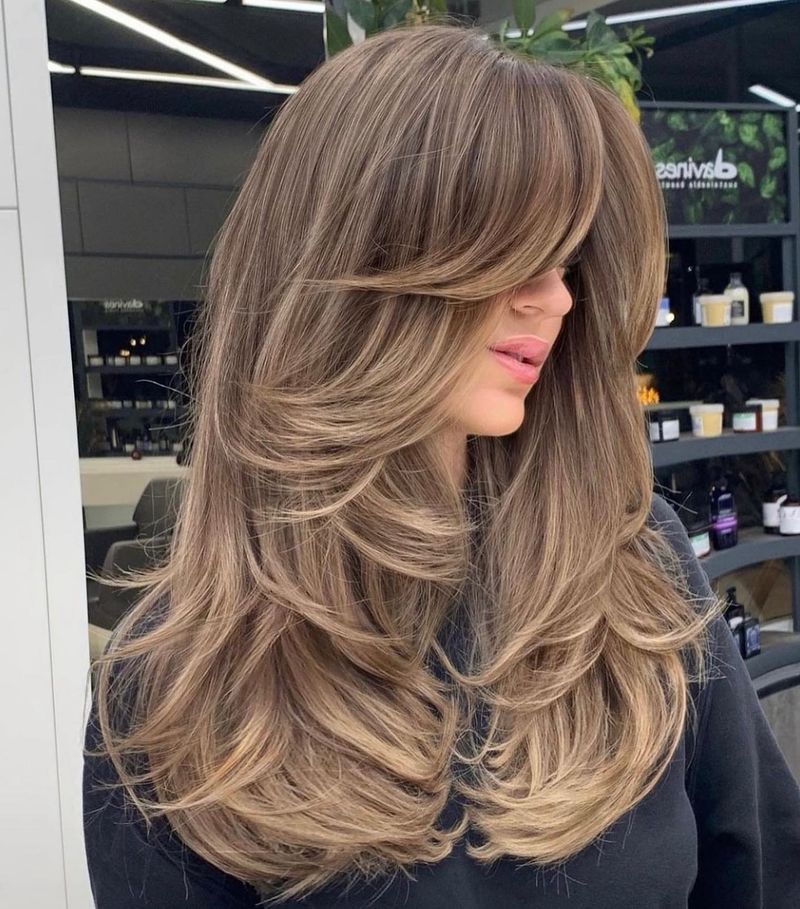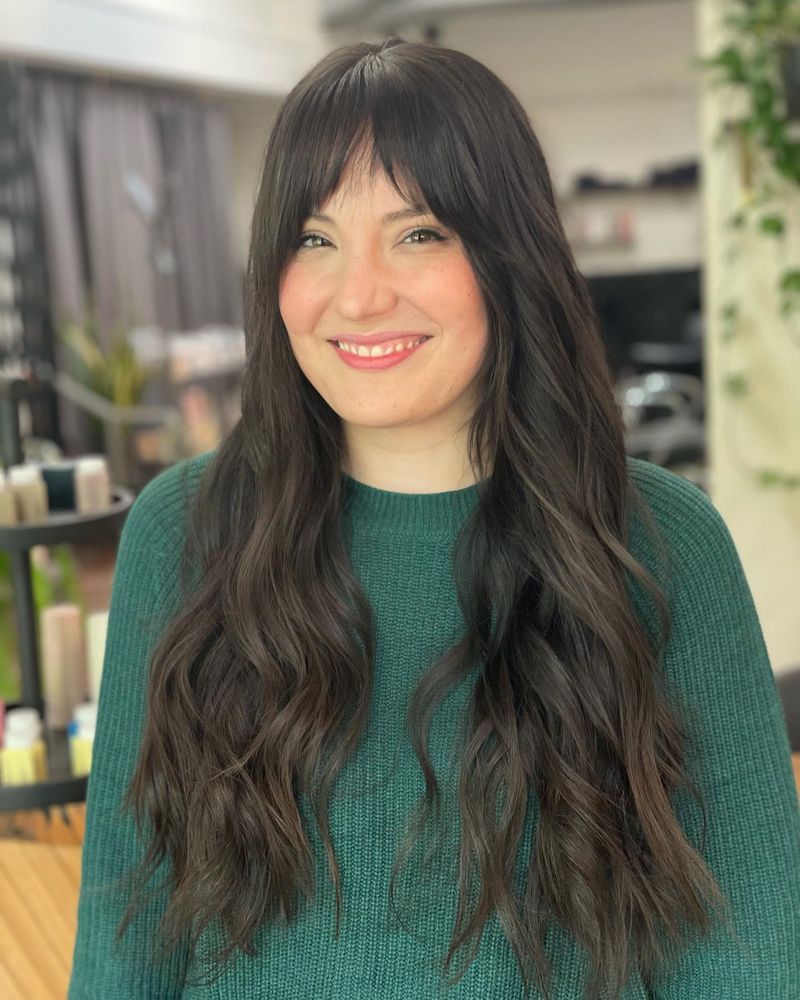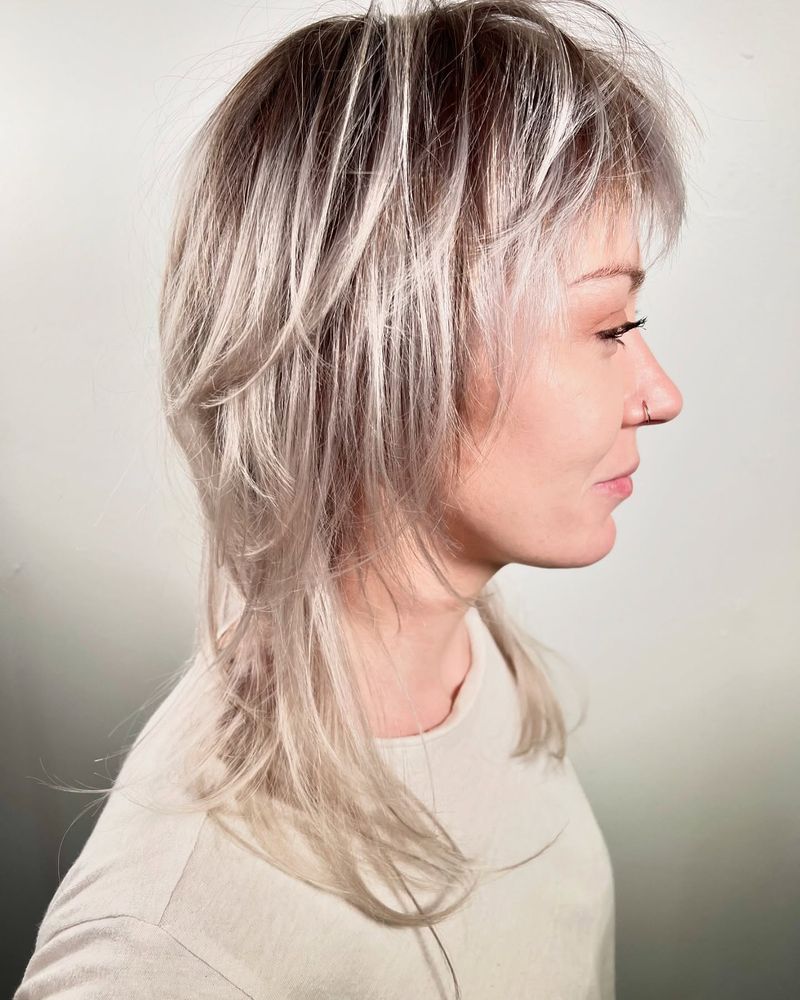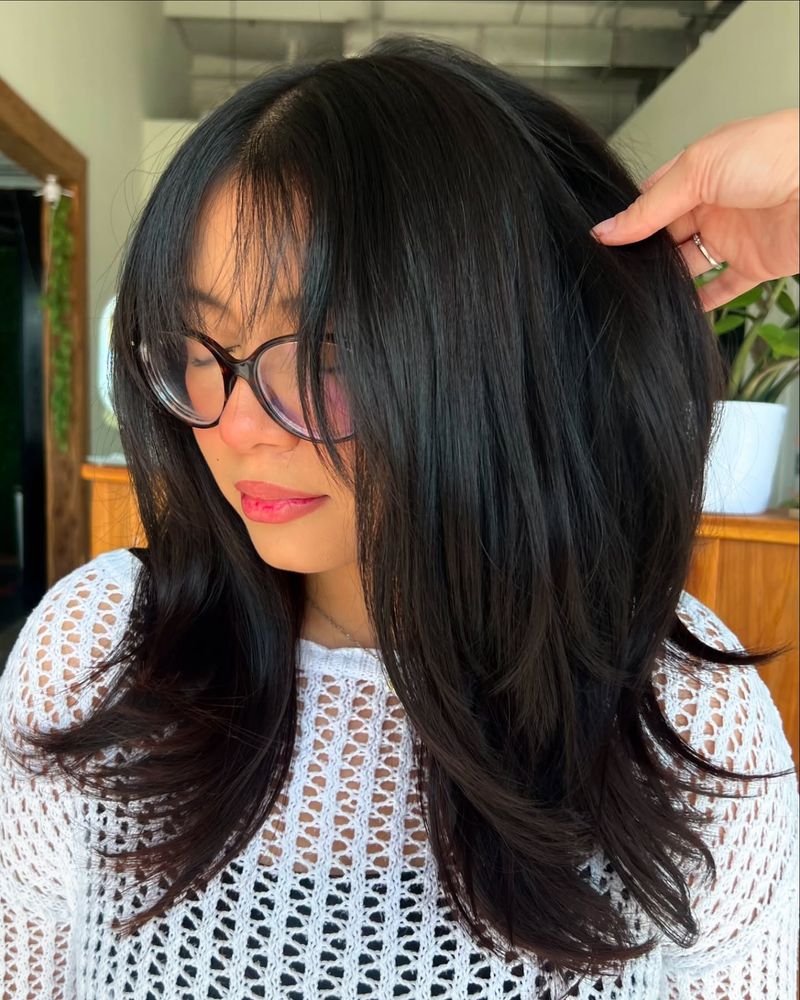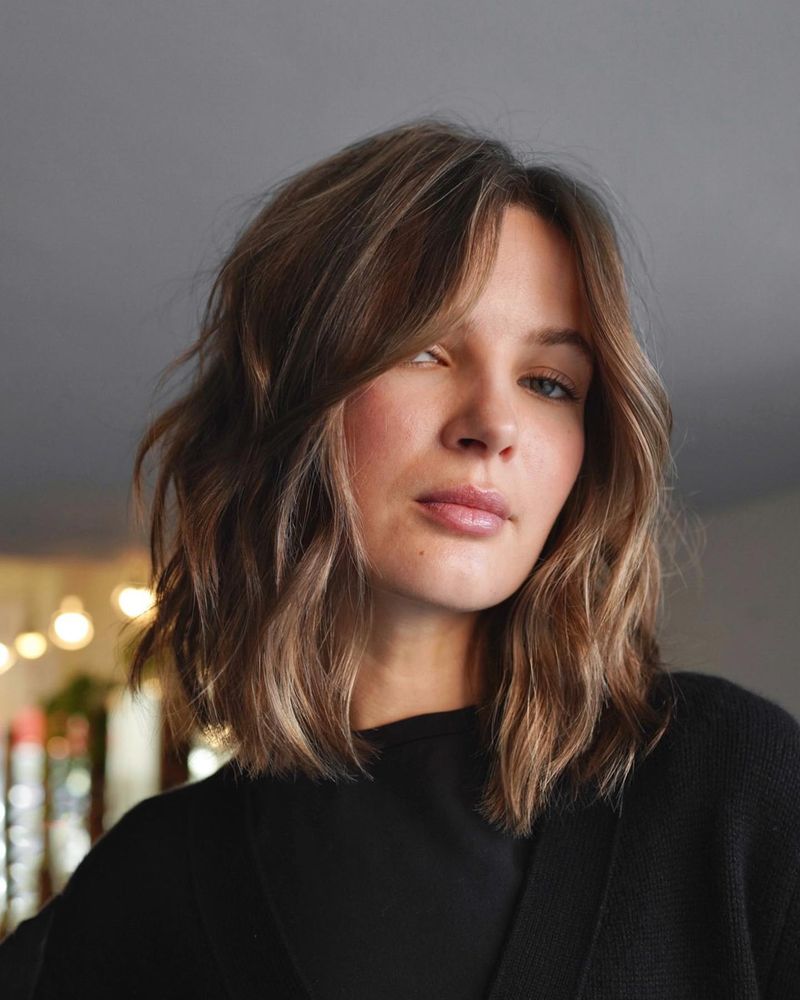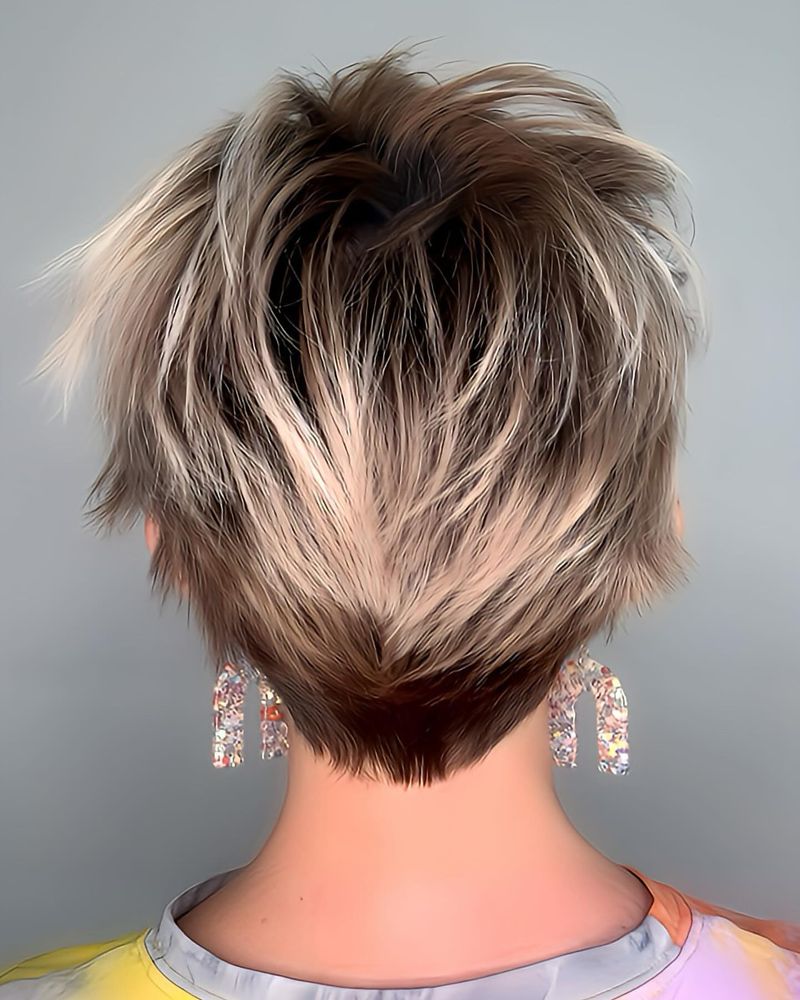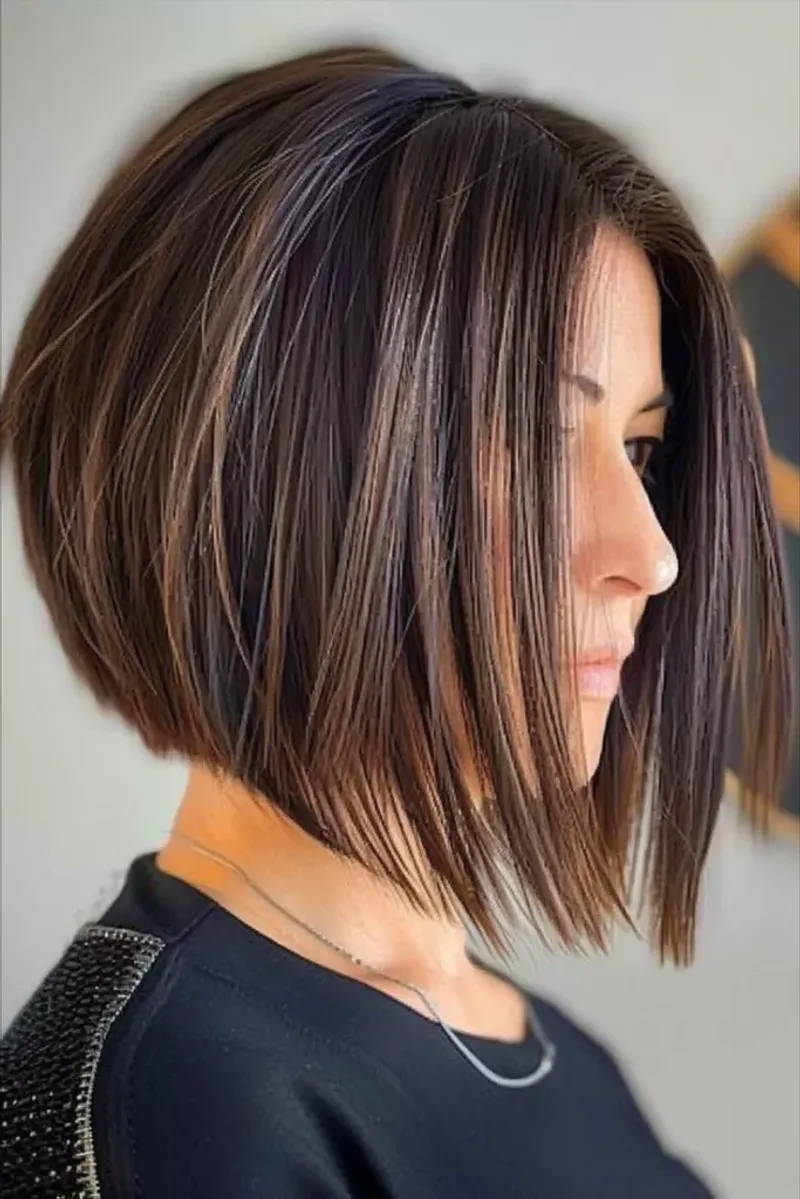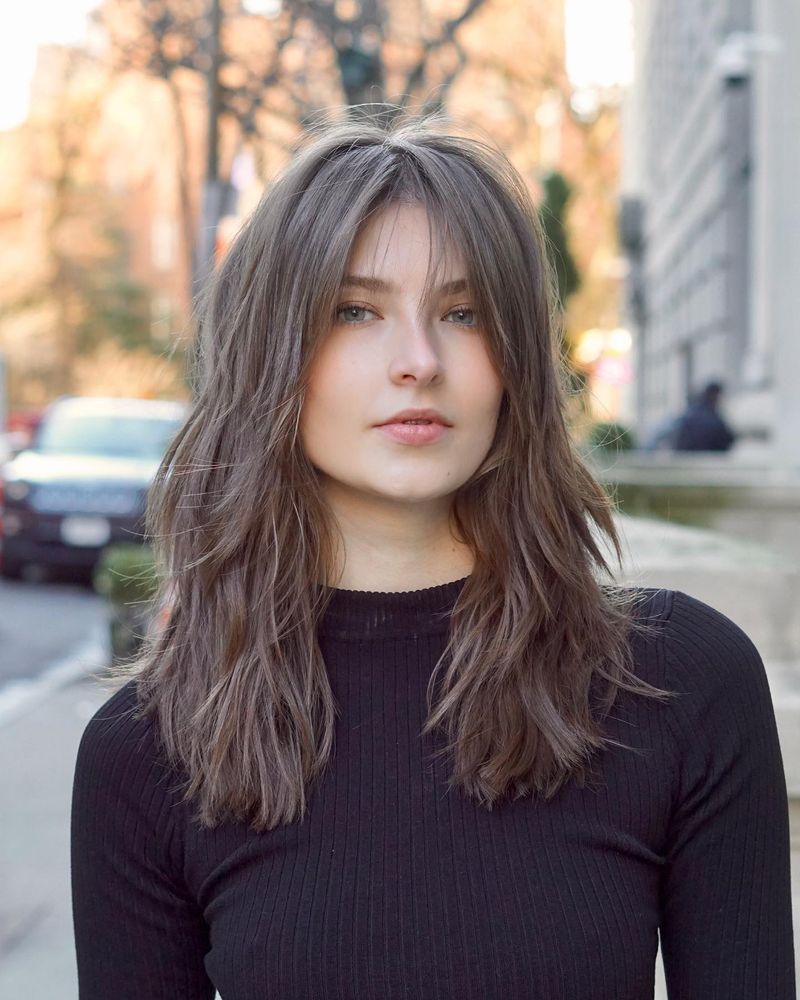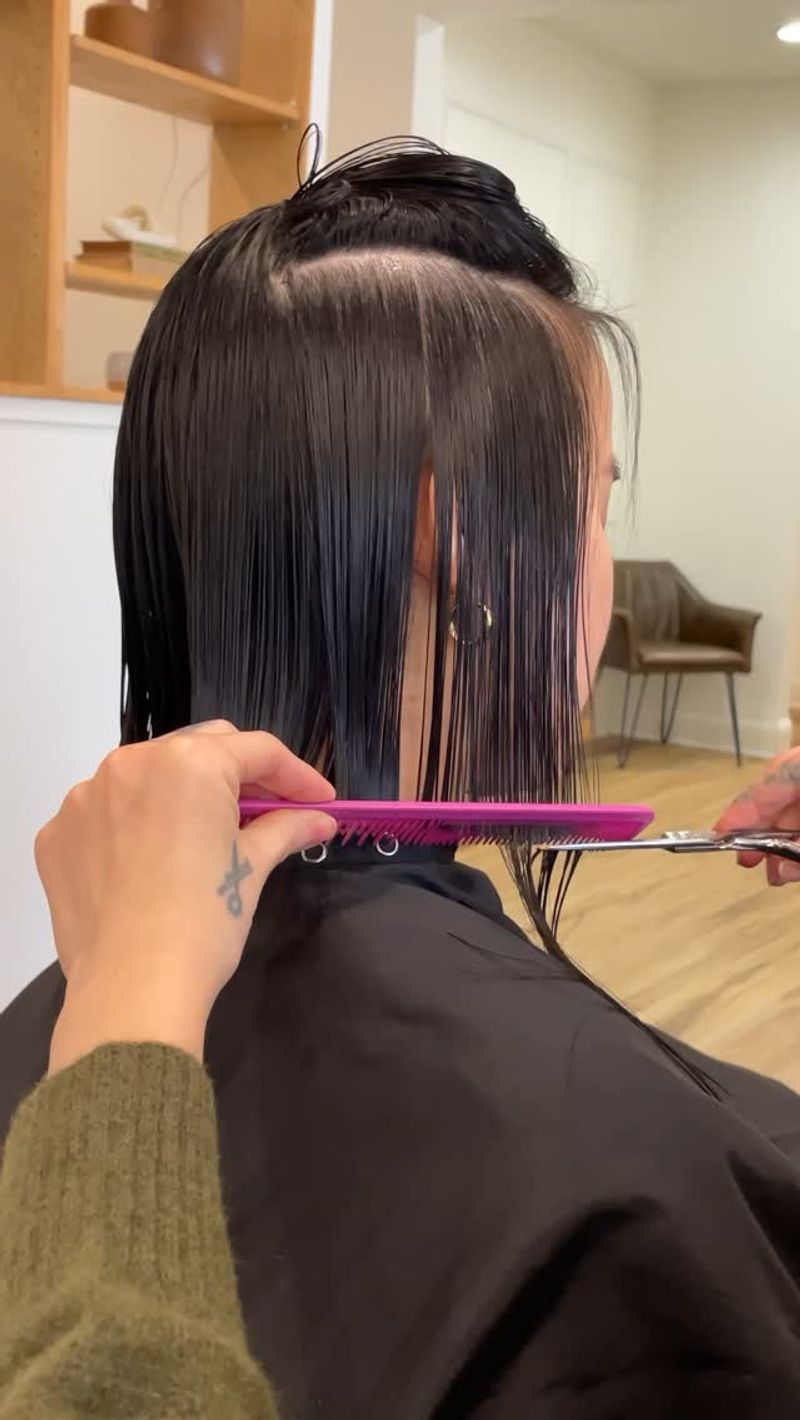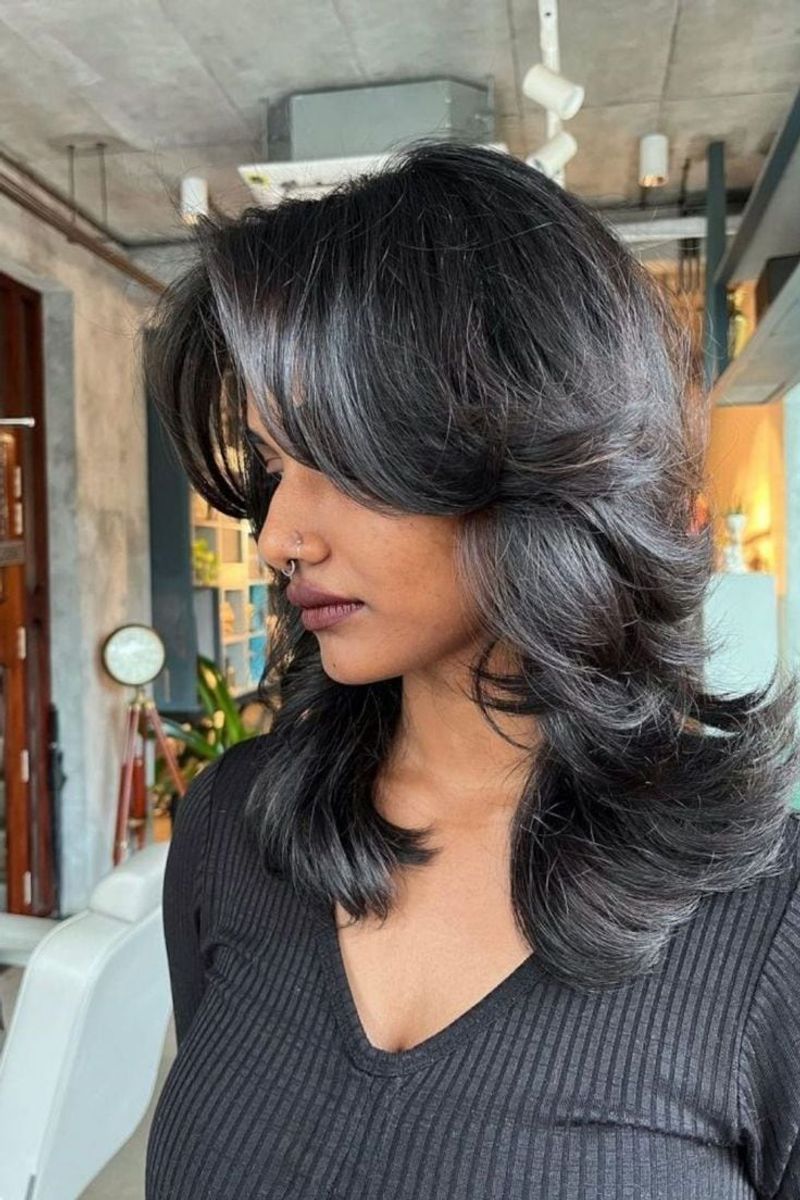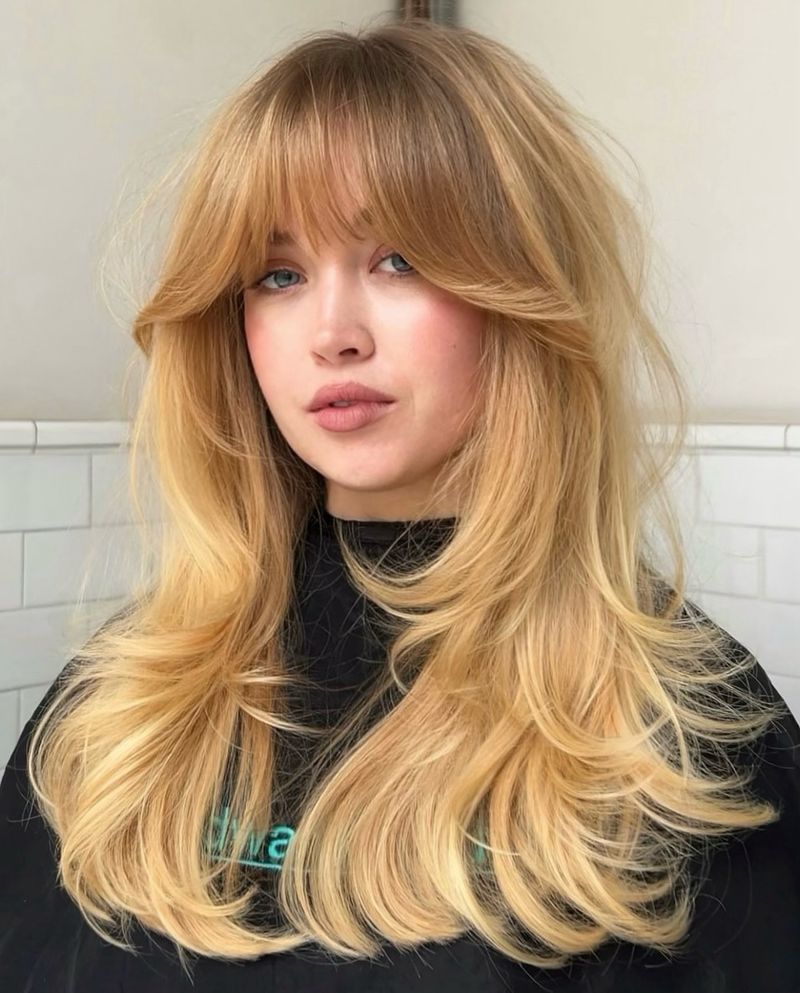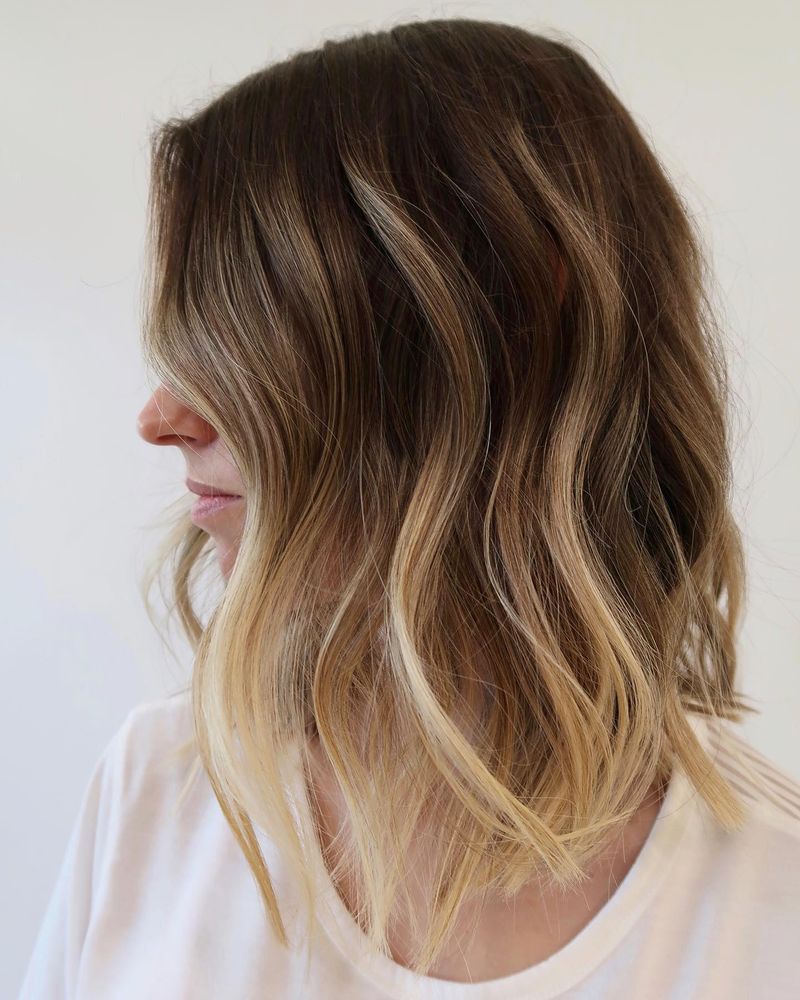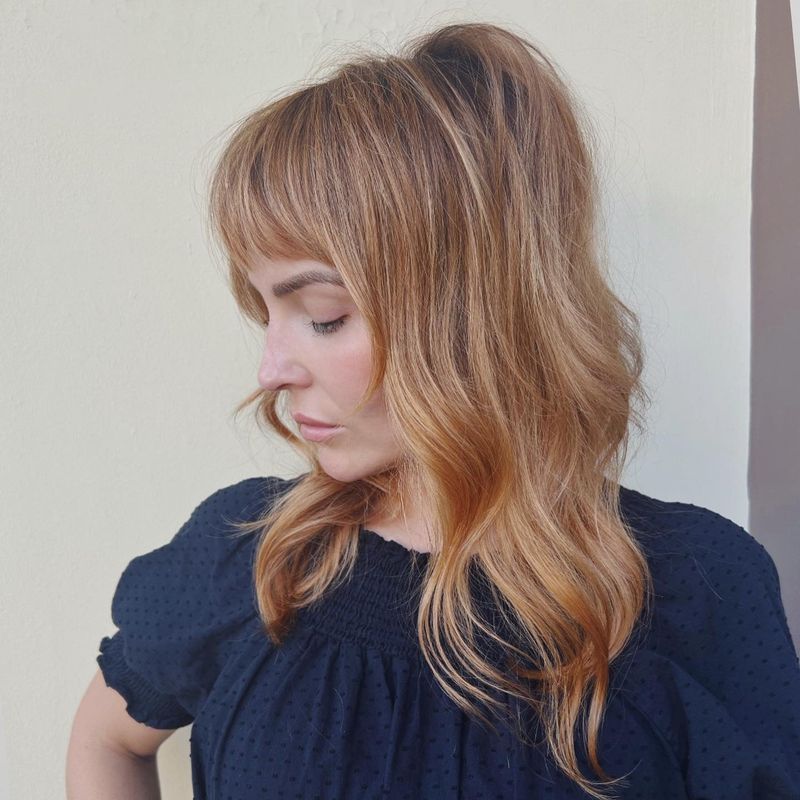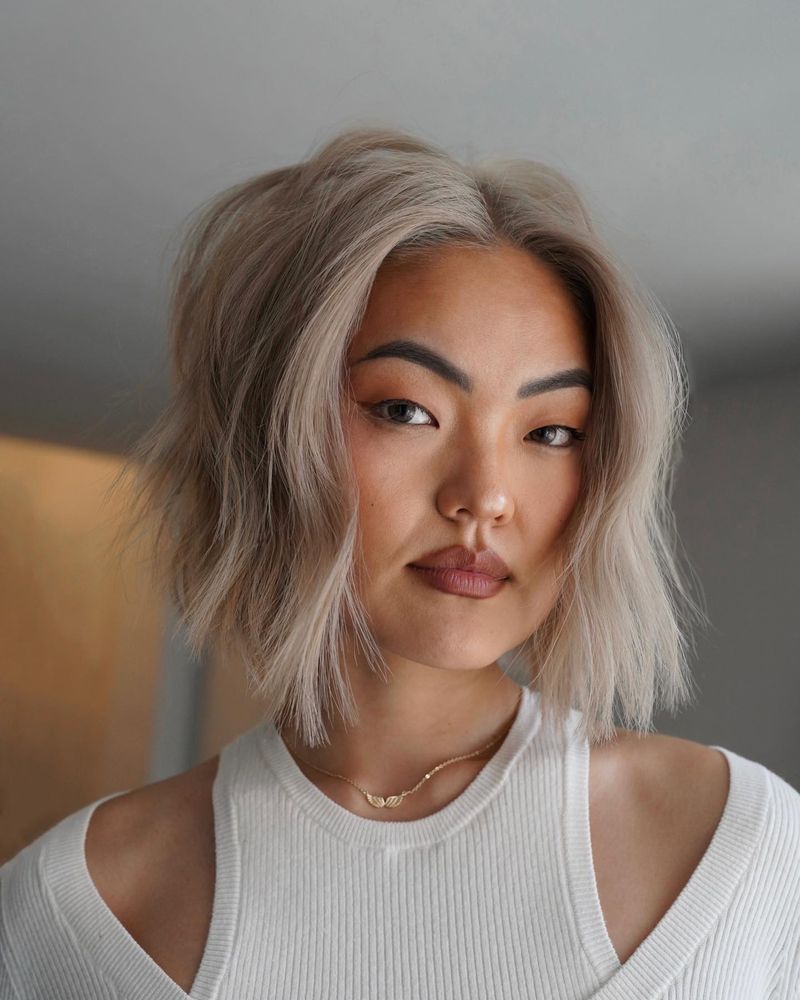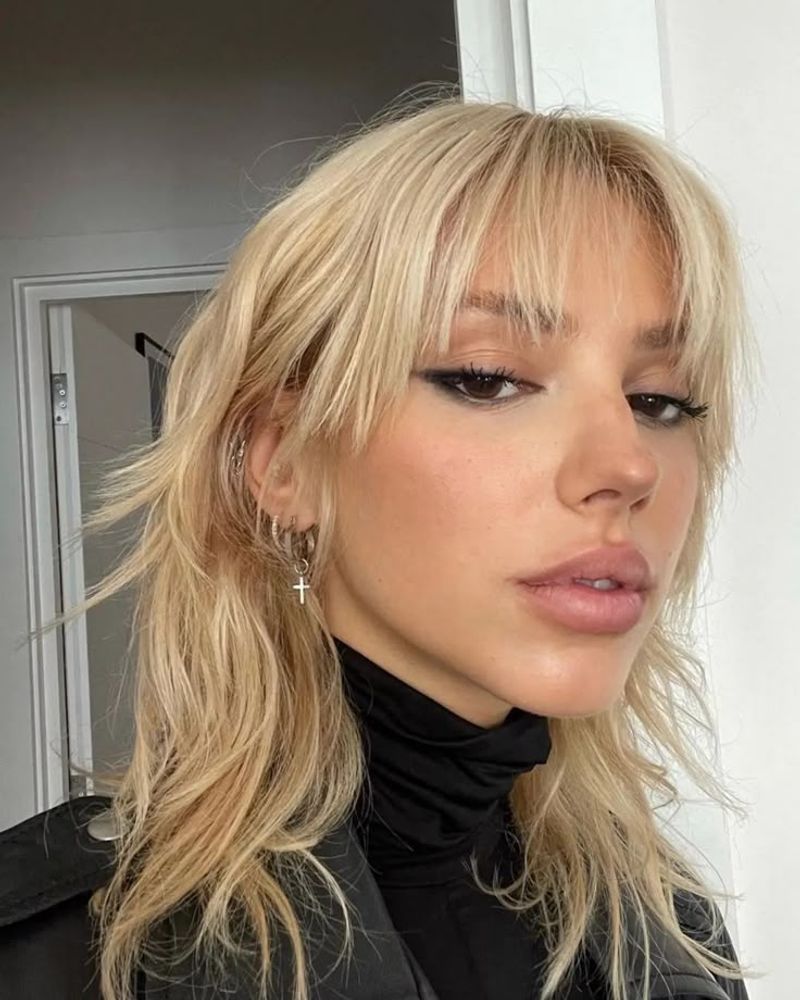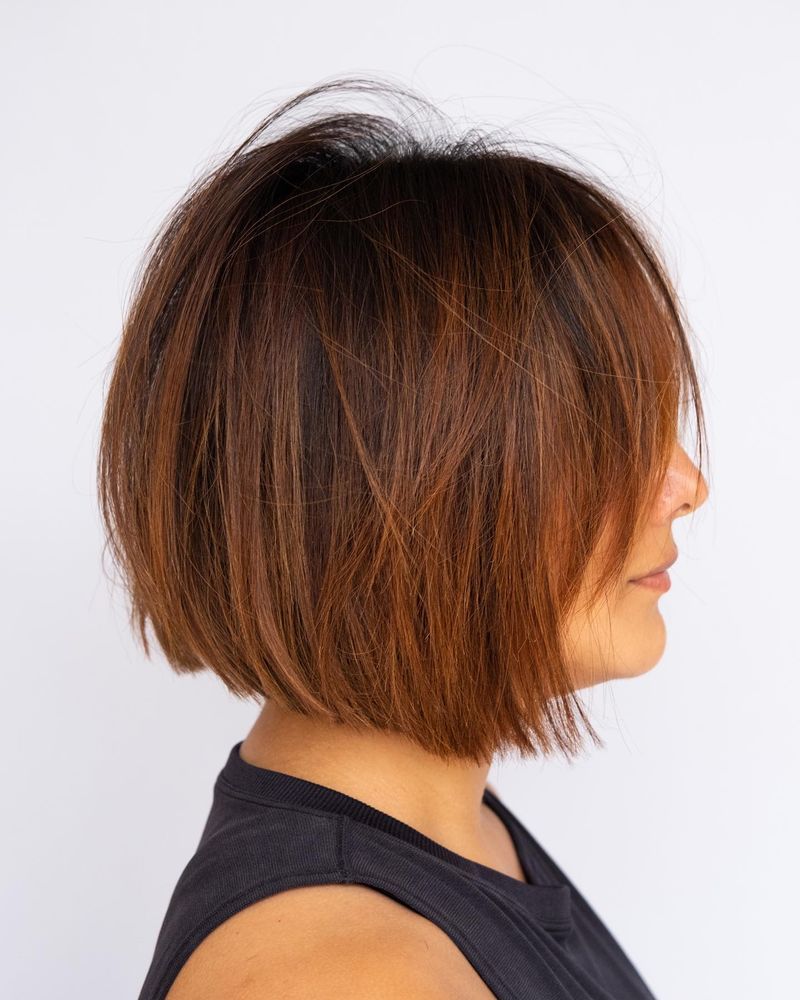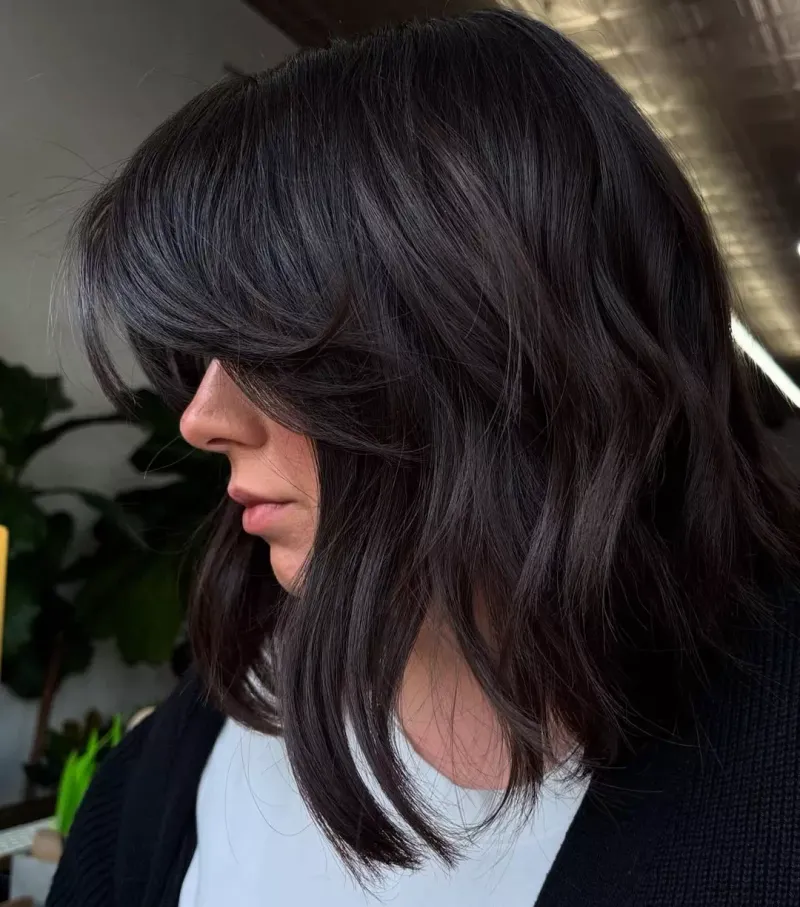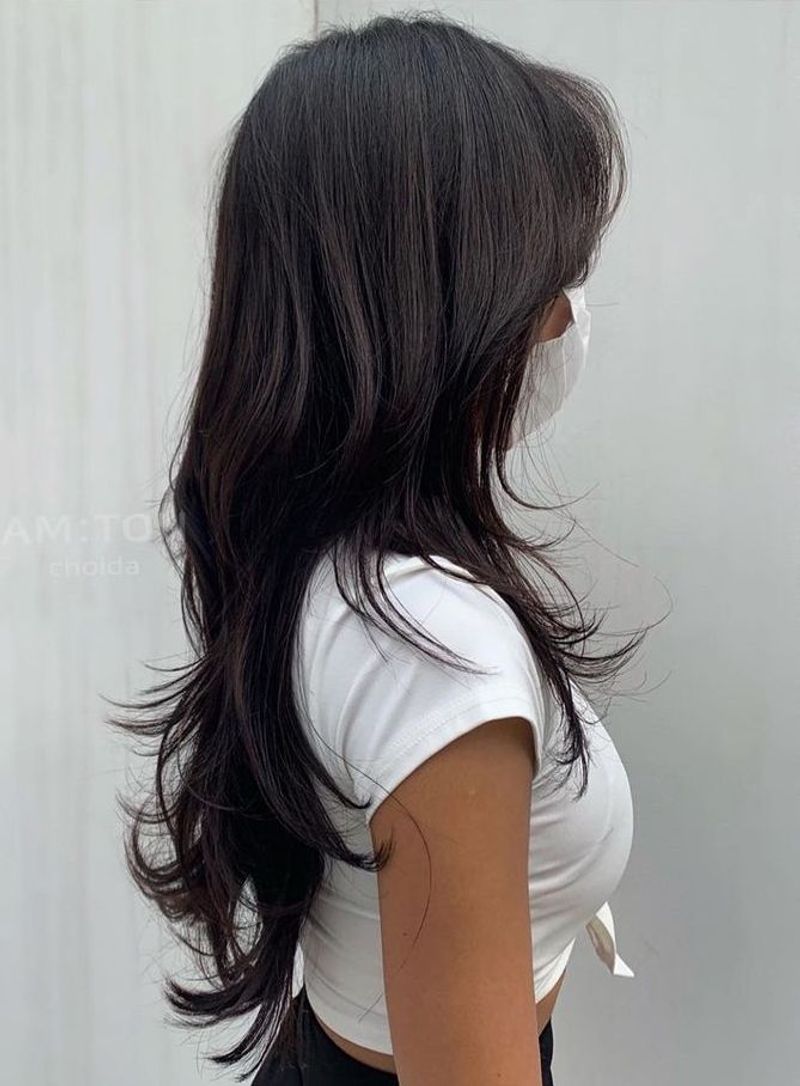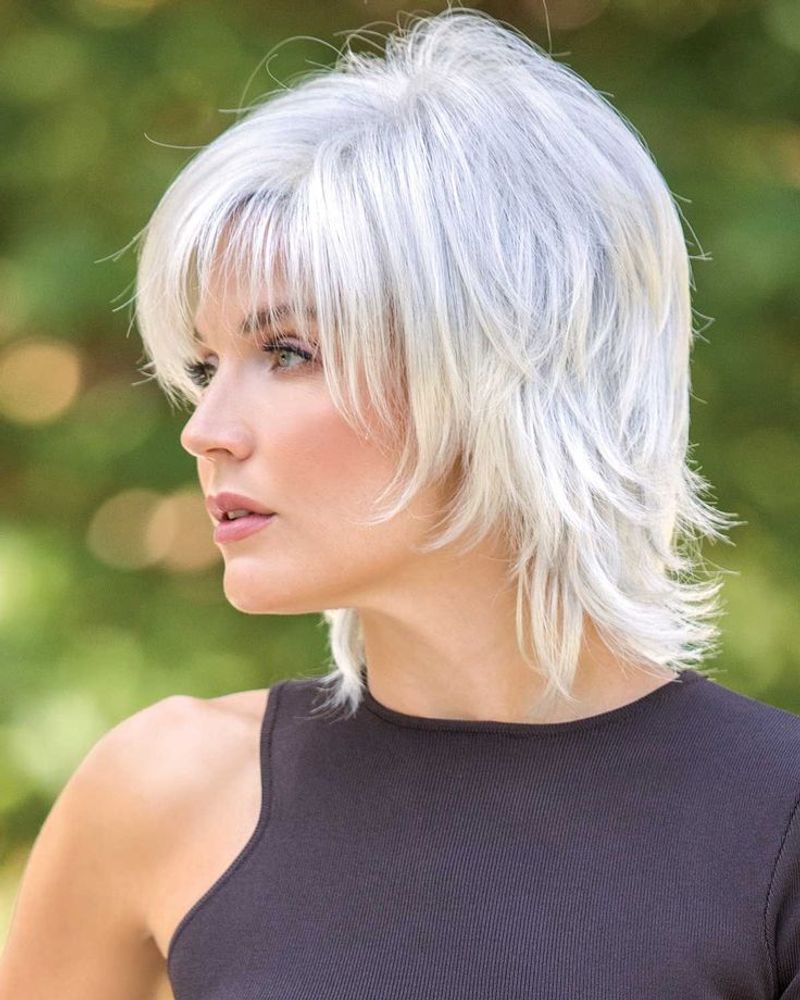Bored Of Straight Hair? These 30 Layers Change Everything
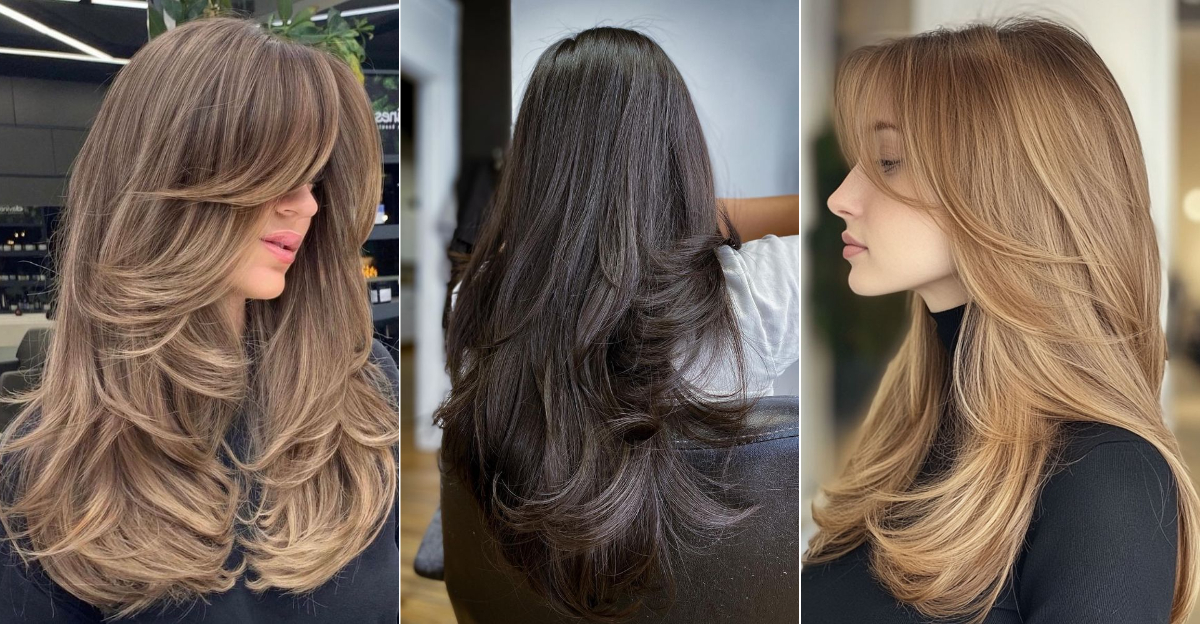
Straight hair can feel like a one-trick pony sometimes.
I’ve had my fair share of hair boredom looking at the same flat strands day after day. The game-changer? Layers. Not just any layers – strategic, personalized cuts that transform limp locks into hair with movement and personality.
These 30 layer styles have completely changed how I view straight hair, and they might just revolutionize your look too.
1. Face-Framing Curtain Layers
Curtain layers open up your face like beautiful drapes revealing a window. They start shorter near your cheekbones and gradually lengthen, creating a soft frame that highlights your best features.
I tried these after months of hair hanging like a sheet around my face. The transformation was instant – suddenly my cheekbones popped and my eyes looked brighter. The best part? They’re totally low-maintenance.
Morning styling takes just minutes with these layers. A quick blow-dry with a round brush turns the front pieces under slightly, creating that perfect face-framing effect without hours of work.
2. Choppy Mid-Length Shag
Mid-length shags bring rock-star attitude to ordinary straight hair. The choppy, varied lengths create texture where there was none, with shorter pieces on top that gradually blend into the longer base.
My friend Sarah switched to this cut after 15 years of one-length hair. The difference was shocking – her fine hair suddenly looked twice as thick. The uneven edges give the illusion of fullness while removing weight.
Movement becomes automatic with this style. Even on days when you just air-dry, the different layer lengths create natural texture and bounce that straight hair typically lacks.
3. Long V-Cut Layers
V-cut layers create a dramatic point at the back when your hair falls naturally. The sides are cut shorter, gradually lengthening toward the center back, forming that distinctive V-shape.
I watched my sister’s transformation with this cut – her waist-length straight hair went from heavy and flat to dynamic and full of movement. The weight distribution makes long hair feel lighter without sacrificing length.
The clever thing about V-cuts is how they remove bulk from the right places. Your hair maintains length but gains movement, especially noticeable when you walk and your hair swings with more bounce and life.
4. Invisible Internal Layers
Invisible layers hide within your hair, creating movement without obvious layer lines. Your stylist removes weight from underneath while maintaining the outer appearance of one-length hair.
My co-worker never wanted “obvious” layers but complained about her heavy, flat hair. After getting invisible internal layers, everyone noticed something different but couldn’t pinpoint what changed – her hair just moved better.
The magic happens when you turn your head. Suddenly your hair swings and bounces in ways one-length cuts never could. For those afraid of dramatic changes, this technique offers subtle enhancement without visual commitment.
5. Blunt Bob with Hidden Layers
A blunt bob with hidden layers offers the clean lines of a classic bob with secret movement underneath. The sharp outer edge remains intact while interior layers remove weight and add bounce.
My own transformation to this style shocked me – I kept the strong geometric shape I loved but lost the helmet-like heaviness. The hidden layers made styling easier too, with less blow-drying time needed.
Hair flips and movement happen naturally with this cut. The sharp ends create the illusion of thickness at the bottom while the interior layers allow the hair to move freely instead of hanging stiffly like traditional one-length bobs.
6. Feathered Long Layers
Feathered layers use a razor-cutting technique to create soft, wispy ends throughout long hair. The layers blend seamlessly, with no harsh lines or steps between lengths.
My roommate’s transformation with feathered layers was stunning. Her previously flat, straight hair suddenly had natural-looking texture and movement that made it appear almost wavy when she moved.
The feathered ends catch light differently than blunt cuts. This creates dimension in straight hair that’s normally missing, with a soft, feminine finish that looks effortless. The subtle nature of these layers makes them perfect for those wanting change without losing length.
7. Layered Lob with Textured Ends
The layered lob (long bob) hits between chin and collarbone with textured, piece-y ends. Layers throughout create volume while maintaining the strong outer shape of the classic lob.
My sister-in-law switched to this cut after years of long, one-length hair. The transformation was dramatic – her fine hair suddenly had body and movement it never had before. The textured ends prevented the dreaded triangle shape that straight hair often forms.
Styling becomes almost foolproof with this cut. The layers do the work for you, creating natural volume at the crown while the textured ends move freely around your face and neck, framing features in a flattering way.
8. Soft Rounded Layers
Rounded layers form a soft U-shape at the back rather than the pointed V-cut. The layers curve gently around the head, following its natural shape for a soft, feminine finish.
I watched my mom’s transformation with rounded layers – her straight, aging hair suddenly looked healthier and more youthful. The curved shape removed weight while maintaining a soft, natural line that complemented her face.
Movement happens differently with rounded layers. Instead of the dramatic swing of V-cuts, these create a gentle bounce and flow that looks incredibly natural. The rounded shape works especially well for finer hair types that need subtle volume without harsh lines.
9. Cascading Waterfall Layers
Cascading layers create a waterfall effect with multiple lengths flowing from top to bottom. Each layer is slightly longer than the one above it, creating continuous movement throughout the hair.
My cousin’s transformation to cascading layers changed her entire look. Her previously flat, one-dimensional hair suddenly had depth and dimension that made it look thicker and healthier. The varied lengths created natural-looking texture even when she did minimal styling.
The visual effect of these layers is stunning. When you move, the different lengths catch the light in varied ways, creating that coveted dimensional look that straight hair often lacks. It’s like having built-in visual interest without needing color or styling products.
10. Bottleneck Bangs with Layers
Bottleneck bangs start narrow at the center of the forehead then widen toward the temples, resembling the shape of a bottle. Paired with complementary face-framing layers, they create a stunning focal point.
I tried this combination after years of no bangs and flat layers. The transformation was remarkable – suddenly my face had structure and my eyes popped. The bottleneck shape offered versatility too, as they could be styled straight across or swept to the side.
The magic of this pairing is how the bangs and layers work together. The bottleneck shape draws attention to your eyes while the face-framing layers enhance your cheekbones and jawline, creating a complete framing effect that’s incredibly flattering.
11. Razor-Cut Shattered Layers
Razor-cut shattered layers use a straight razor instead of scissors to create ultra-thin, wispy ends throughout the hair. The technique removes bulk and creates movement without obvious layer lines.
My friend’s transformation with razor-cut layers was subtle but significant. Her thick, heavy straight hair suddenly looked lighter and moved naturally. The ends appeared naturally textured rather than bluntly cut.
The difference is most noticeable when you run your fingers through razor-cut hair. The ends feel soft and light rather than blunt and heavy. This technique works wonders for thick straight hair that needs weight removal without losing the appearance of fullness.
12. Stacked Back Layers
Stacked layers create dramatic volume at the back of the head through short, stacked pieces that gradually lengthen toward the front. The technique builds height and fullness where straight hair typically falls flat.
My aunt’s transformation to stacked layers completely changed her fine, limp hair. The back suddenly had volume and shape while the longer front pieces maintained length around her face. The dimensional effect made her hair look twice as thick.
Movement becomes automatic with stacked layers. The shorter pieces at the back naturally lift away from the head, creating that coveted volume at the crown that makes hair look fuller and more youthful.
13. Modern Shag with Curtain Bangs
The modern shag combines multiple layer lengths with curtain bangs for an effortlessly cool look. Shorter layers on top create volume while longer pieces maintain length and movement.
I watched my colleague transform with this cut – her straight, unremarkable hair suddenly had personality and edge. The combination of layers throughout with the face-framing curtain bangs completely changed her face shape in the most flattering way.
Styling becomes almost optional with this cut. The varied layers create natural texture that looks good even when air-dried, while the curtain bangs draw attention to the eyes and cheekbones whether styled or simply pushed to the sides.
14. Long Pixie with Textured Top
Long pixies bring edge to straight hair with short back and sides but longer, layered pieces on top. The contrast between lengths creates dramatic texture and movement where there was none before.
My friend’s transformation from long, one-length hair to a textured pixie was the most dramatic I’ve seen. Her previously unremarkable straight hair suddenly had character and style that perfectly complemented her face shape.
The beauty of this cut is its versatility. The longer top pieces can be styled sleek and flat for a sophisticated look or tousled with texturizing products for edgy volume. It’s like having multiple styles in one cut, all while eliminating the weight and flatness of long straight hair.
15. Angled Bob with Undercut Layers
Angled bobs feature a dramatic slant from shorter back to longer front, while undercut layers remove bulk from underneath. The combination creates movement and swing that one-length bobs lack.
My sister’s transformation to this style was game-changing for her thick, straight hair. The angle created a strong visual line while the undercut layers removed weight that had previously dragged her hair down. The result was hair that moved freely and bounced with each step.
The technical brilliance of this cut is how it distributes weight. The undercut removes bulk where you don’t need it while maintaining the clean outer line of the angled bob, giving you the best of both worlds – strong shape with effortless movement.
16. Butterfly Layers
Butterfly layers feature shorter pieces around the face and crown that gradually blend into longer lengths. The effect resembles butterfly wings, with shorter layers that frame the face and create movement.
My friend’s transformation with butterfly layers was subtle but effective. Her straight hair gained dimension and movement without losing length. The face-framing shorter pieces brightened her features while the longer layers maintained the fullness she wanted.
The beauty of butterfly layers is how they create dimension through strategic placement. Rather than layers throughout, they focus on specific areas – around the face and crown – where movement matters most, leaving length and weight where you want it.
17. Wispy Fringe with Long Layers
Wispy bangs paired with long layers create a soft, romantic look for straight hair. The thin, piece-y fringe draws attention to the eyes while the subtle layers throughout add movement without sacrificing length.
I tried this combination after years of plain, one-length hair. The transformation was subtle but significant – suddenly my face had a focal point and my hair had movement. The wispy nature of the bangs meant they were low-maintenance and could easily be pinned back on days I wanted a different look.
The pairing works because both elements are understated. The wispy fringe isn’t heavy or dramatic, and the long layers maintain length while adding just enough movement to prevent the dreaded flat look straight hair often has.
18. Italian Bob with Interior Layers
The Italian bob hits just below the jaw with a strong perimeter but hidden interior layers. The outer shape remains bold and geometric while the interior layers create movement and prevent the heavy look one-length bobs can have.
My colleague’s transformation to this style was perfect for her straight hair. She kept the strong shape she wanted but lost the helmet-like heaviness her previous one-length bob had. The interior layers made styling easier too.
What makes this cut special is the contrast between the bold outer line and the soft interior movement. From the outside, you see a classic, chic bob, but when you move, the hidden layers create bounce and swing that traditional bobs lack.
19. Hush Cut Layers
The hush cut creates invisible layers using a special point-cutting technique. The stylist cuts into the hair at an angle rather than straight across, creating soft movement without obvious layer lines.
My friend’s transformation with the hush cut was exactly what she needed – her straight hair suddenly had life and movement without looking “layered.” The subtle technique removed weight in all the right places while maintaining her length and the appearance of thickness at the ends.
The genius of this technique is its subtlety. You get all the benefits of layers – movement, reduced weight, easier styling – without the obvious look of layers. It’s perfect for straight hair that needs movement but doesn’t want that distinctly layered appearance.
20. Concave Layers
Concave layers create a curved shape that hugs the head, shorter at the back and gradually lengthening toward the front. The technique creates natural volume at the crown while maintaining length around the face.
My mom’s transformation with concave layers completely changed her aging, straight hair. The shape instantly created lift at the crown where her hair had started to fall flat with age. The longer front pieces softened her jawline in the most flattering way.
The technical brilliance of concave layers is in the weight distribution. By removing length at the back while keeping it in front, the hair naturally lifts away from the head at the crown, creating that coveted volume straight hair often lacks.
21. Point-Cut Textured Ends
Point-cutting creates textured ends by cutting into the hair vertically rather than straight across. The technique removes bulk and creates movement at the ends without obvious layers throughout.
My sister’s transformation with point-cut ends was subtle but effective. Her straight, one-length hair suddenly had movement and texture at the ends that made it look naturally wavy when she moved. The technique prevented the blocky appearance straight hair often has at the bottom.
The beauty of point-cutting is how it maintains length while creating texture. Unlike traditional layers that remove length in sections, point-cutting just softens and texturizes the ends, giving straight hair natural movement without sacrificing overall length.
22. French Girl Layers
French girl layers create that effortless, slightly undone look popular in Parisian style. The layers are soft and disconnected, with piece-y sections around the face and subtle layers throughout.
My friend’s transformation to French girl layers changed her entire vibe. Her previously plain, straight hair suddenly had that coveted cool-girl texture that looked like she hadn’t tried too hard – the essence of French style. The face-framing pieces highlighted her best features while the subtle layers throughout created natural movement.
What makes these layers special is their irregular nature. Rather than evenly spaced, perfectly blended layers, French girl layers are deliberately imperfect, creating that enviable “I woke up like this” texture that straight hair typically lacks.
23. Collarbone Cut with Invisible Layers
The collarbone cut hits right at – you guessed it – the collarbone, with invisible layers throughout. This length flatters everyone while the hidden layers create movement without obvious layer lines.
My colleague’s transformation to this cut was perfect for her office job – professional enough for work but with enough style and movement to look current. The collarbone length framed her face perfectly while the invisible layers prevented the heavy, flat look one-length cuts often have.
The versatility of this cut makes it a winner. The collarbone length works with any face shape, and the invisible layers create movement while maintaining the appearance of thickness that straight hair needs. It’s long enough for ponytails but short enough for easy styling.
24. Sliced Layers
Sliced layers use a special cutting technique where scissors slide down the hair shaft, removing weight without creating obvious steps. The result is hair that moves freely while maintaining a clean outer line.
My friend with extremely thick, straight hair transformed with sliced layers. Her previously heavy, unmovable hair suddenly had lightness and swing she’d never experienced. The technique removed bulk from all the right places while keeping the length she loved.
The difference is most noticeable when you move. Sliced layers create that beautiful, flowing movement that makes hair look healthy and vibrant. The technique is especially effective for thick straight hair that needs weight removal without losing its strong perimeter shape.
25. Octopus Haircut Layers
The octopus haircut features short, voluminous layers on top that “spill” into longer, tentacle-like pieces underneath. The dramatic contrast between top and bottom layers creates movement and texture where straight hair is typically flat.
My friend’s transformation to the octopus cut completely changed her fine, straight hair. The short top layers created volume at the crown while the longer pieces maintained length and movement. The unusual distribution of weight made her hair look twice as thick.
The technical brilliance of this cut is in its weight distribution. By removing bulk from the mid-lengths while keeping short layers on top and long pieces at the bottom, the hair gains natural volume and movement that straight hair typically lacks.
26. Rounded Bob with Internal Layers
The rounded bob features a curved shape that’s slightly shorter at the back and gradually lengthens toward the front. Internal layers remove weight without disrupting the strong outer shape.
My sister-in-law’s transformation to this style was perfect for her straight, fine hair. The rounded shape created the illusion of fullness while the internal layers prevented the heavy, flat look one-length bobs often have. The combination made her hair look thicker and more vibrant.
The beauty of this cut is how it creates fullness through shape rather than products or styling. The rounded silhouette naturally creates volume at the back while the internal layers allow for movement without sacrificing the clean outer line.
27. Slide Cut Layers
Slide cutting creates seamless layers by sliding shears down the hair shaft at an angle. The technique removes weight and creates movement without visible layer lines or steps.
My friend’s transformation with slide cut layers was subtle but significant. Her straight, one-length hair suddenly had life and movement without looking obviously layered. The technique removed weight in all the right places while maintaining her length and the appearance of thickness.
What makes slide cutting special is its precision. Your stylist can target exactly where weight needs to be removed, creating customized movement exactly where you need it. It’s perfect for straight hair that needs movement in specific areas without obvious layering throughout.
28. Graduated Layers with Side Sweep
Graduated layers create a subtle angle from shorter back to longer front, paired with a side-swept style. The combination adds volume at the crown while the side sweep creates asymmetrical interest.
My colleague’s transformation with graduated layers completely changed her thin, straight hair. The graduation created natural lift at the crown while the side-swept style added volume through the clever distribution of weight. The asymmetrical look made her hair appear thicker and more dynamic.
The technical advantage of this cut is how it uses direction to create volume. By graduating the layers and directing them to one side, the hair naturally lifts and falls with more body than a symmetrical cut would allow.
29. Wolf Cut Layers
The wolf cut combines elements of a shag and a mullet with disconnected layers throughout. Short, choppy layers on top create volume while longer layers at the bottom maintain length and movement.
My friend’s transformation to a wolf cut was dramatic but exactly what her straight hair needed. The disconnected layers created texture and volume she’d never had before, while the overall shape framed her face in the most flattering way.
What makes the wolf cut special is its rebellious nature. Unlike traditional layers that blend seamlessly, wolf cut layers are deliberately disconnected, creating that coveted tousled texture that straight hair typically lacks. It’s like having built-in bedhead in the best possible way.
30. Pixie Bob with Textured Crown
The pixie bob combines the short back of a pixie with the longer front of a bob. Textured layers throughout the crown create volume and movement where straight hair is typically flat.
My aunt’s transformation to a pixie bob completely changed her aging, fine hair. The short back was easy to manage while the longer front pieces softened her features. The textured crown created volume she hadn’t had in years, making her hair look thicker and more youthful.
The genius of this cut is how it distributes weight. By keeping length in front while shortening the back and texturizing the crown, the hair naturally lifts away from the head, creating volume without requiring extensive styling or products.
